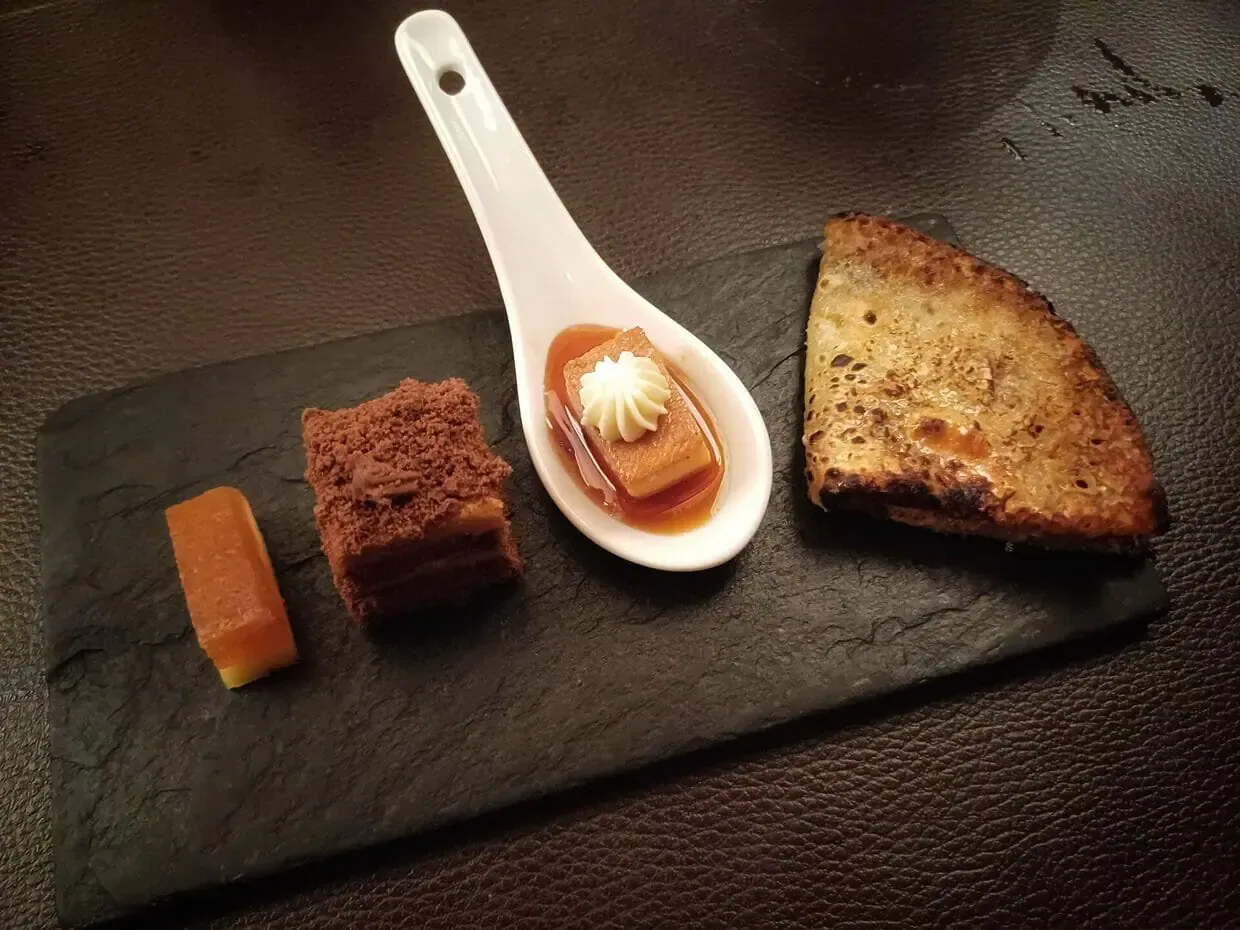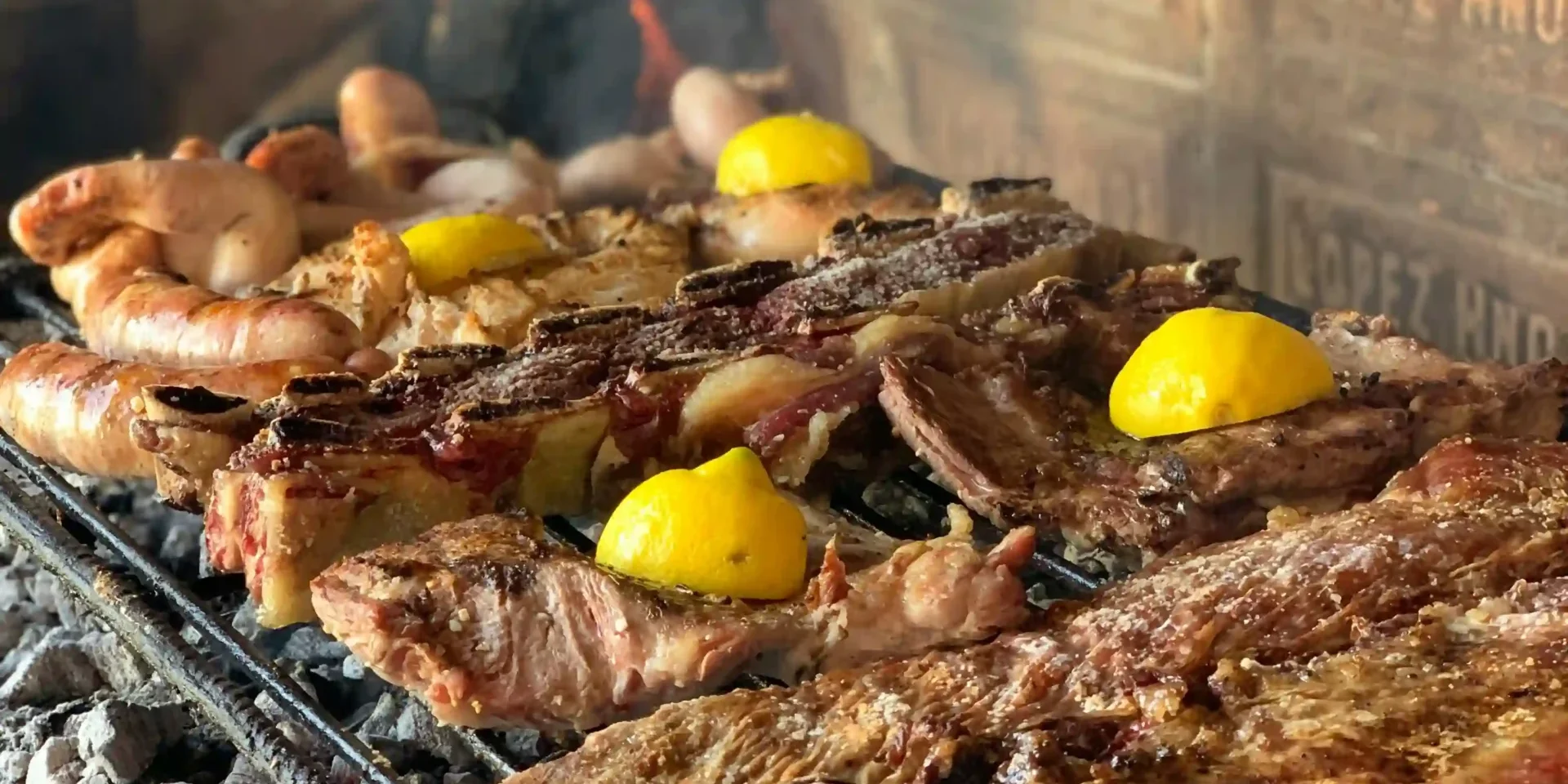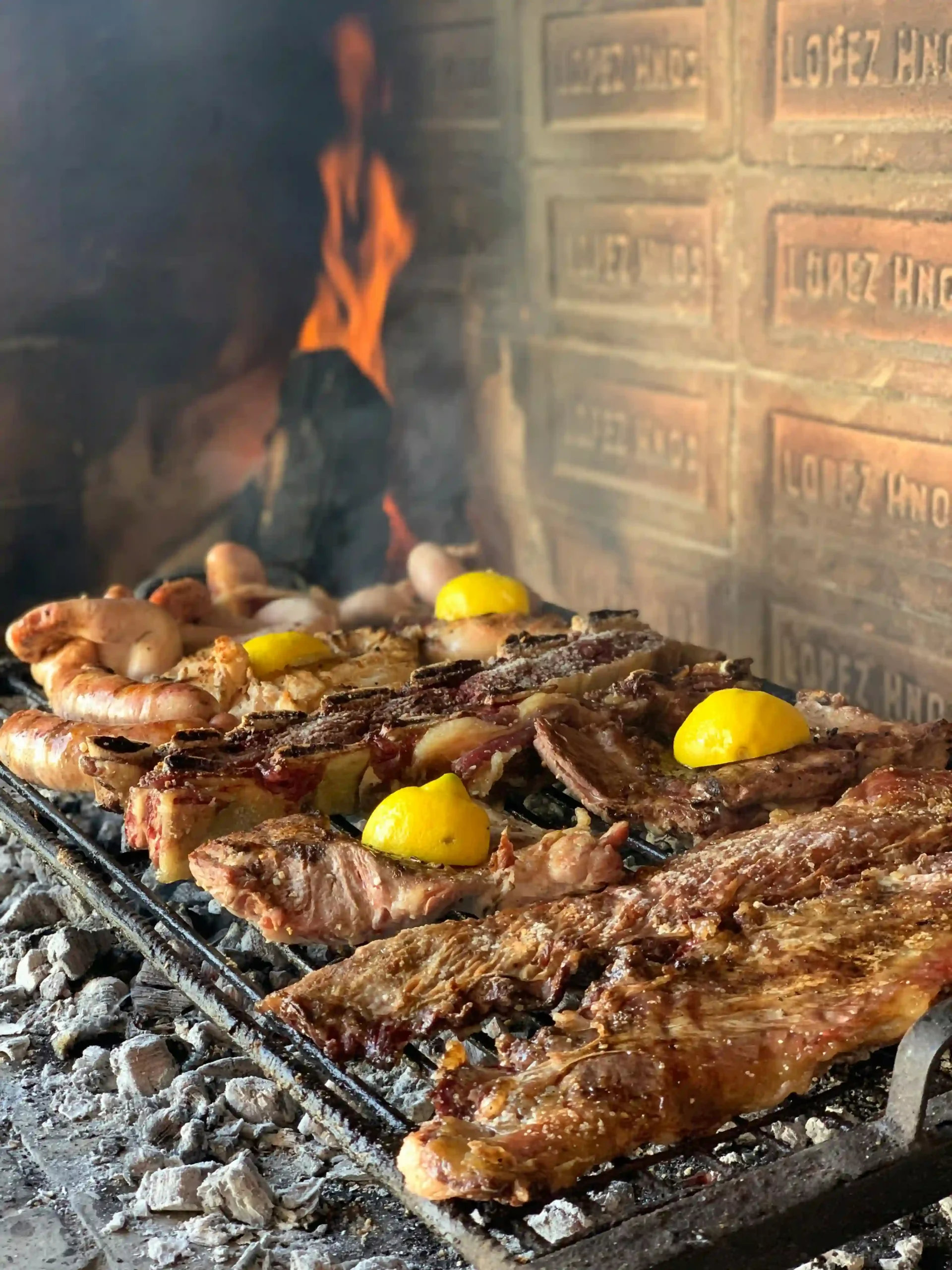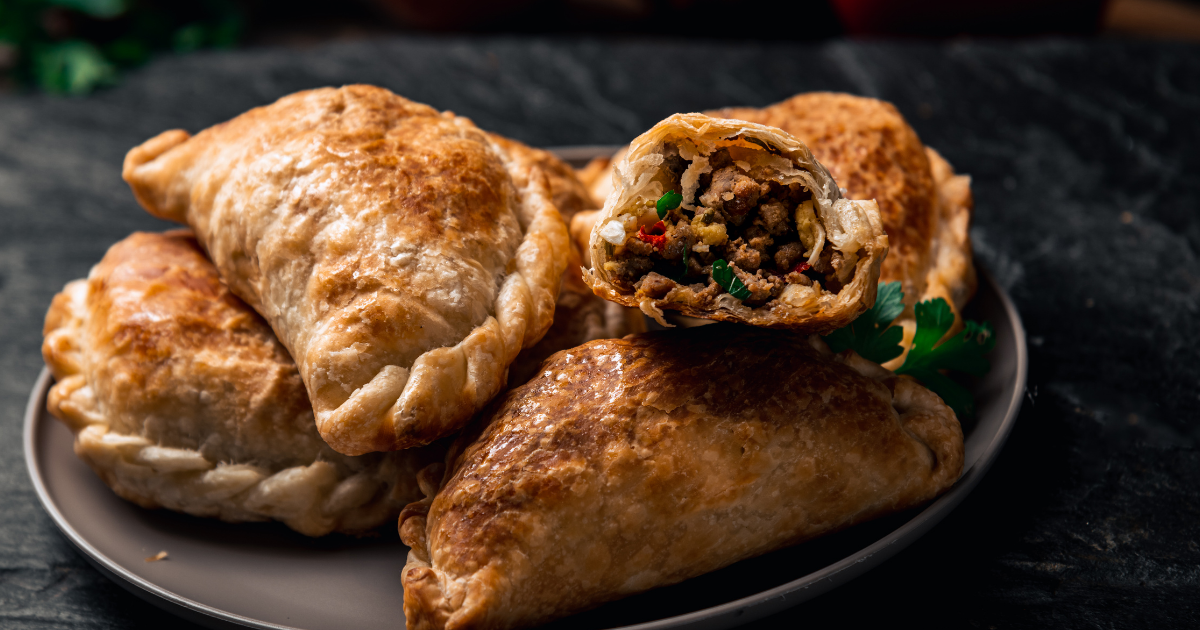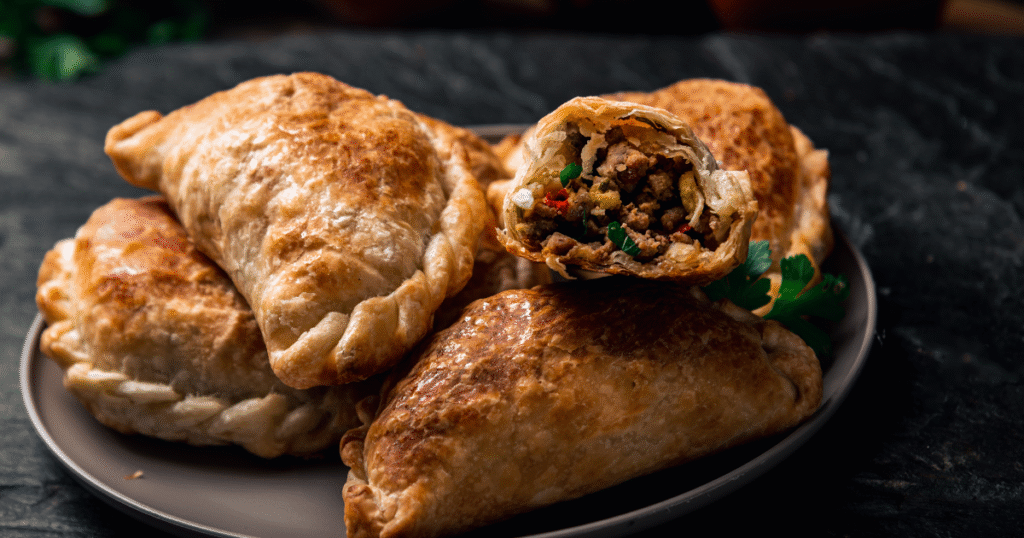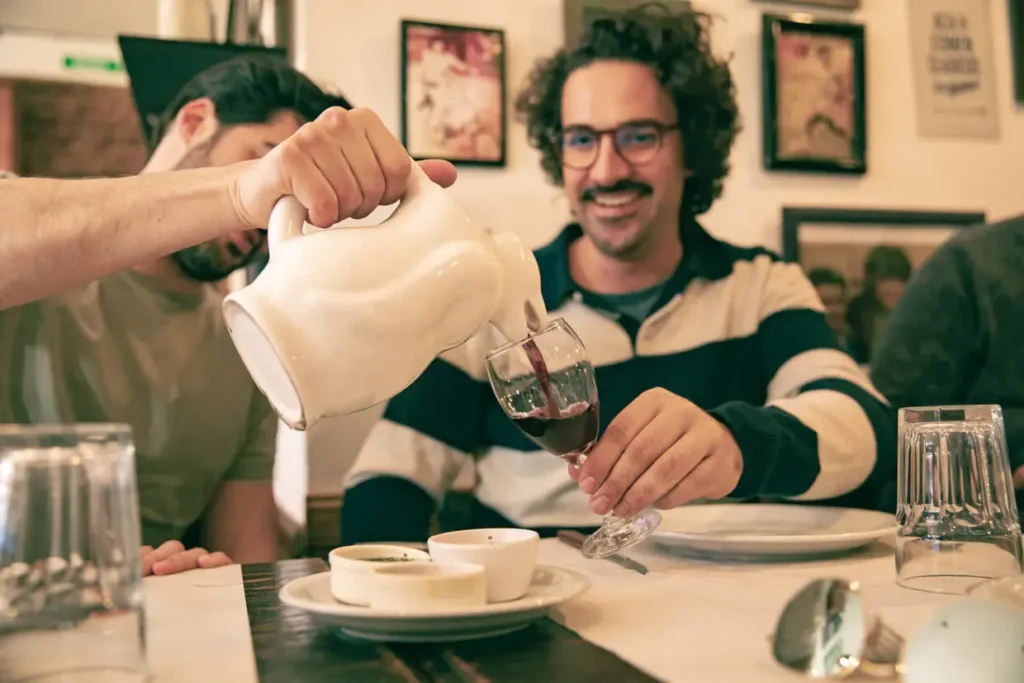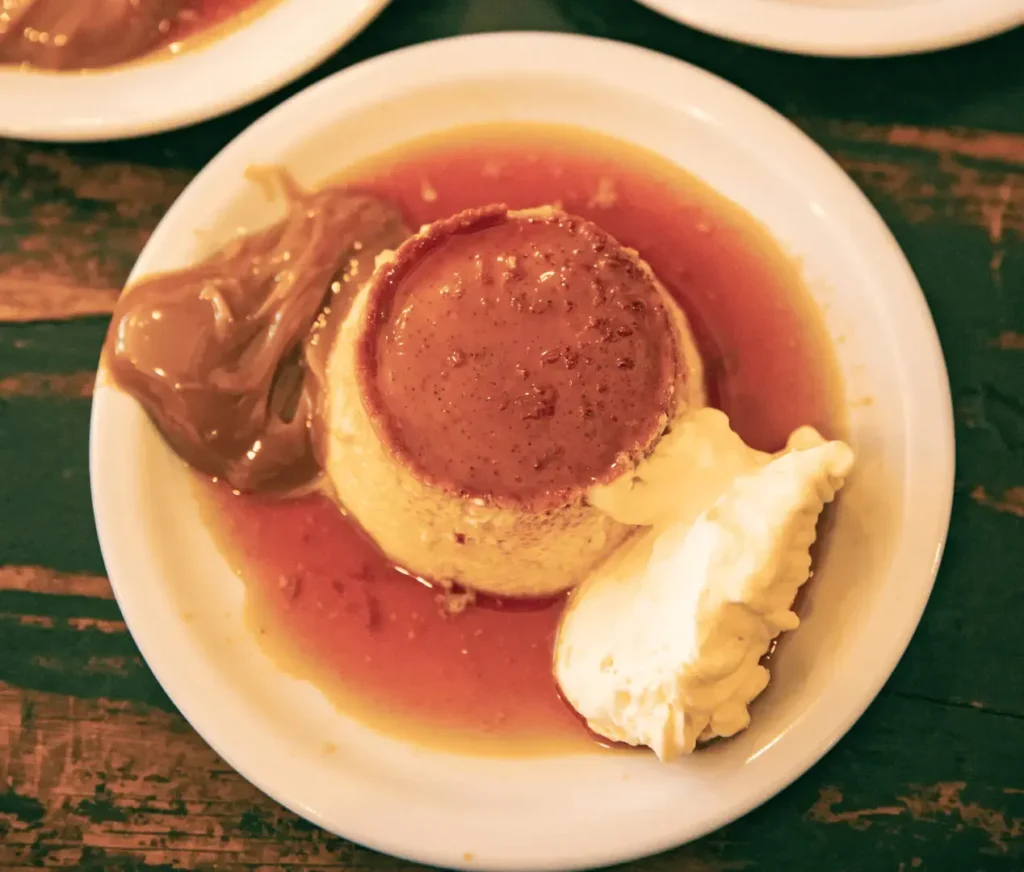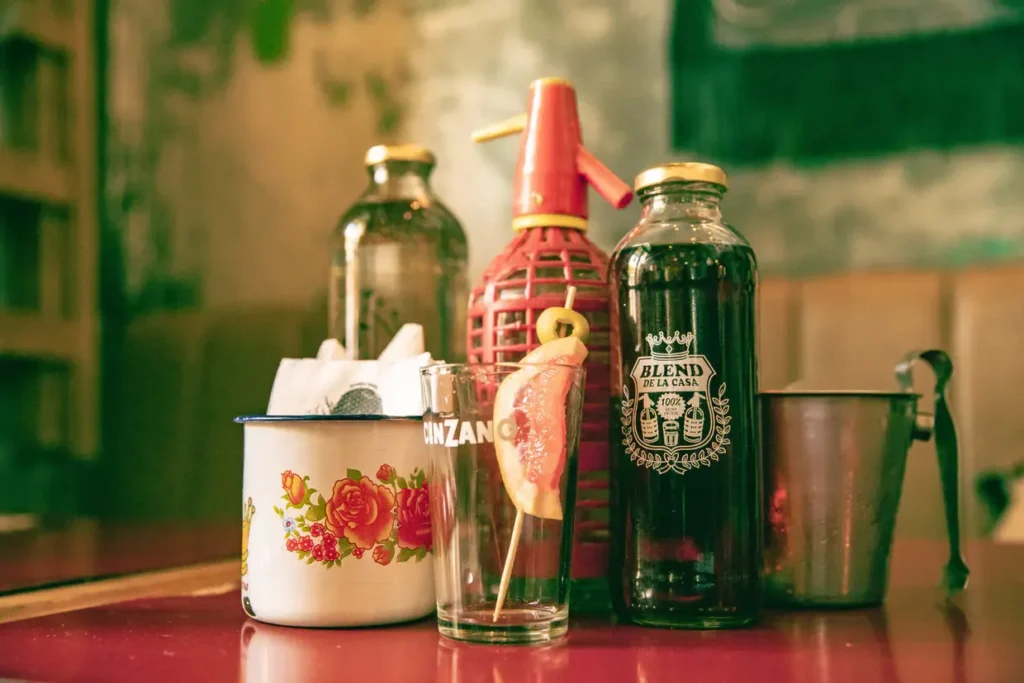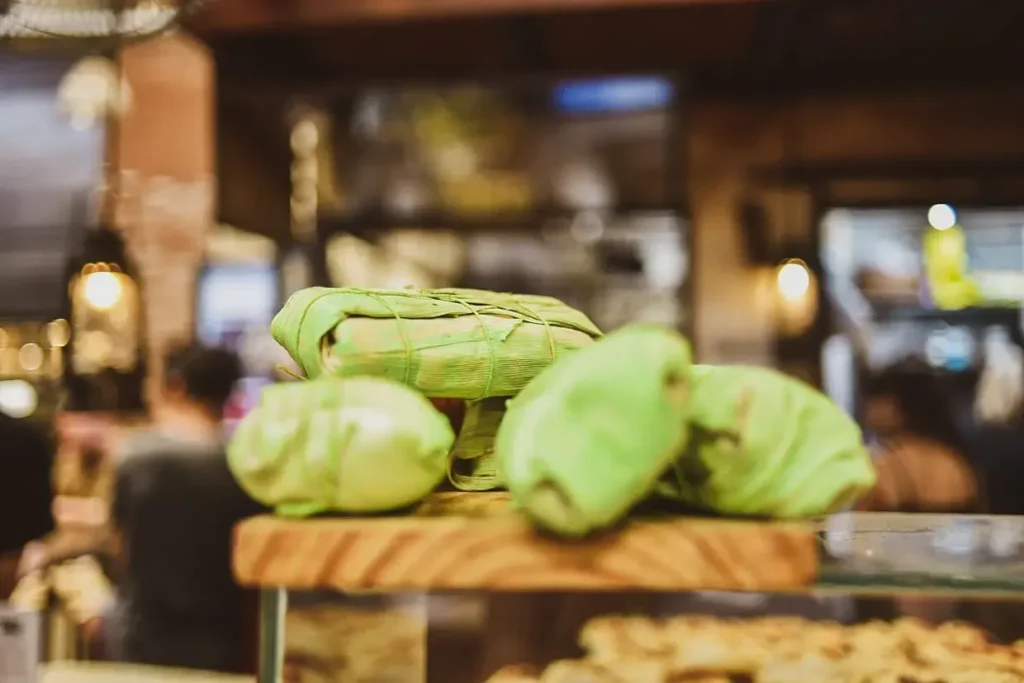A Local’s Guide to Argentinian Desserts: the Famous, the Unexpected and the Dulce de Leche on Everything
Argentinians have a mean sweet tooth, so it comes as no surprise that Argentinian desserts are a pretty important part of our gastronomy. As we like to say: there’s always room for dessert, especially when it’s as good as ours (are we bragging? Maybe a bit, but it’s mostly true).
Fair warning: we are known for adding dulce de leche (milk jam) to pretty much everything, so this list will include several desserts which prominently feature it. However, some contenders have made it to our top 15 Argentinian desserts without the help of Argentina’s favorite ingredient.
Without further ado, let’s get into it!

1- Dulce de leche
Dulce the leche is the belle of the ball, so to speak, or Argentinian desserts. Simply put, dulce de leche (or milk jam), is a confection made by heating sugar and milk together for a long, long time. What does it taste like? Picture caramel, but better. And dairy-based, of course.
Legend has it that dulce de leche came to be because of a fortuitous error during the colonial period, as a servant in one of the estancias (cattle ranch) left a pot of milk and sugar on the stove and forgot about it. When she finally got back to it, the liquid had condensed into a thick, creamy mixture.
While dulce de leche can be eaten straight from the jar, most people prefer to use it as a topping, filling or to add an extra something to a different dessert.
A very popular and simple homemade dessert is banana with dulce de leche. You either cut the banana into slices and add a huge spoonful of dulce de leche, or mash the banana and mix it together with dulce de leche.
As we mentioned, several desserts on this list prominently feature dulce de leche.
2- Alfajores
Alfajores, also known as “Argentinian cookies” are one of Argentina’s most beloved desserts and afternoon snacks. Alfajores are cookie sandwiches with a dulce de leche filling, sometimes featuring a chocolate or powdered sugar glaze.
There are alfajores with different fillings, such as fruit jam or chocolate mousse, but really, most people think of dulce de leche when they think of alfajores.
There are alfajores at any price range and they can be bought at kiosks, supermarkets, bakeries, cafés and many restaurants.
The most famous Argentinian alfajores are probably Havanna’s, which sells them separately or in packages. Theirs are some of the best store-bought alfajores, particularly the 70% cocoa ones.
If you are looking for something a little bit more gourmet, head to a good café or bakery. Try either the chocolate glaze alfajores or the alfajores “de maicena”, which are made with cornstarch and then rolled around in grated coconut which sticks to the dulce de leche, giving them their signature look.
Don’t attempt to eat an alfajor de maicena without a good cup of coffee in hand. Cornstarch absorbs moisture, so the cookie is quite dry. This won’t be a problem as long as you have something to drink (and coffee or chocolate milk elevate the alfajor experience).
3- Conitos
A conito is what you get when you take an alfajor and go “How can I make this more about the dulce de leche than the cookie?”. A conito is a plain vanilla cookie topped off with a generous helping of dulce de leche, and then covered in chocolate. The most popular version of conitos are Havanna’s “havannets”, but you can find them in many bakeries as well.
4- Flan Mixto
Flan or creme caramel is a local favorite, a staple dessert in any self-respecting bodegón (traditional diner-style restaurant). A flan is a custard-type dessert, made with eggs, milk and sugar. Argentinians love flan not just because it is undeniably good, but also out of a sense of nostalgia: this is a dessert typically prepared by our nonas (grandmas), who usually have a coveted recipe that is a family secret (if this sounds very Italian, it’s because we are).
While you can order your flan “as is”, the authentic local version is flan mixto, which incorporates whipped cream and dulce de leche. It’s very common to split a flan mixto between two, as its sweetness factor can be a bit much, especially after a generous meal. And speaking of generous meals – if you plan on visiting Buenos Aires, consider joining our Local Foodie Adventure. We promise you great food, great wine, and of course, a flan to seal the deal.
5- Helado or Argentine Gelato
Ice cream may be pretty universal by now, but ours is arguably one of the best in the world. We owe this to three factors:
- We have a long-standing tradition of artisanal ice cream making
- We eat ice cream all year round, no matter the temperature
- Our ingredients are top-notch, like fresh berries from the south and pasture-raised dairy.
When you order ice cream in Argentina, you don’t order by scoop, but rather by container or size. We wrote a pretty detailed article about Argentine gelato (including where to find the best ice cream in Buenos Aires) covering all the details about the intricacies of ordering ice cream.
Must-try local flavors include dulce de leche ice cream (of course), sambayón (from the Italian zabaione), banana split (banana with dulce de leche) and tramontana (cream, dulce de leche and chocolate cookies).
Be prepared, however, because there are several dulce de leche ice cream variations, such as super dulce de leche (dulce de leche ice cream with extra dulce de leche), dulce de leche with brownies and granizado (dulce de leche ice cream with chocolate chips).
6- Panqueques
If you’ve read the word “panqueques” and thought of pancakes, you’re wrong, but not by far. Panqueques are a variation of crepes and can be eaten either as a main dish or dessert.
As a main dish, panqueques are usually served with a ham and cheese filling, or they can be turned into canelones (cannelloni). As a dessert, panqueques are usually filled with -you’ve guessed it – dulce de leche.
If you want to try panqueques with dulce de leche, you are most likely to find them at a bodegón (we have some bodegón recommendations in our Buenos Aires Food Guide) .
7- Budín de Pan
The unsung hero of Argentinian desserts, budín de pan (bread pudding) is usually dismissed as flan mixto’s poor relative, but it shouldn’t be. Sure, budín de pan is made with stale bread, milk and eggs, but that doesn’t make it any less delicious.
Because it is not as fancy, budín de pan is not usually found in restaurants but rather made at home or purchased in rotiserías (food establishments that sell homemade food for takeaway).
8- Postre Vigilante
Postre vigilante is a typical Argentinian dessert which consists of a slice of cheese topped with a slice of jam or jelly, usually quince (dulce de membrillo) or sweet potato (dulce de batata). Note that the jam used is more akin to a paste, therefore the mentioned jam slice.
In the northwest of Argentina, a regional variation features goat cheese and coyote (squash) jam. Likewise, in the Patagonia region, Atuel cheese (similar to French Port Salut) may be served with elderberry jam.
Rumor has it that the name “Postre Vigilante” originated in a Palermo establishment sometime during the 1920s. Apparently, the postre (dessert) was originally offered under the name “queso y dulce”, but became very popular with the officers of a nearby Police Station, who went to this place to grab a quick lunch and quicker dessert. The place changed the name to “Postre Vigilante” as vigilante means “watcher”, which is slang for cop.
9- Pastafrola
Pastafrola is a type of pie made with shortcrust pastry and a jam filling, typically quince (membrillo) or sweet potato (batata) and sometimes, dulce de leche. The signature pastafrola pie has a crust lattice in the shape of a grid, with the filling peeking through the squares.
Pastafrola goes great with mate, and you can buy it in most bakeries and cafés, and some kiosks. Pastafrola is less fancy than other typical Argentinian cakes, but that doesn’t make it any less delicious. Give it a try!
10- Chocotorta
Chocotorta is the quintessential Argentinian dessert. While we may share many recipes with Uruguay, Italy and Spain (and pretty much everyone else in the world if you take a look at our immigration history), Chocotorta is a cake we can confidently say is 100% Argentinian.
Chocotorta came to be in 1975, when the Bagley Company caught wind of a dessert that had become very popular in some towns in the Santa Fe Province which featured Bagley’s Chocolinas, a plain rectangular chocolate cookie.
Bagley added a few tweaks to the recipe, and started a marketing campaign to promote the newly baptized “Chocotorta”. It was an instant hit.
The beauty of Chocotorta lies in its simplicity: it takes only 3 ingredients to make a chocotorta (4 if you are being fancy), and anyone can prepare it. It requires no baking, and it’s practically foolproof. And the best part is that is tastes amazing: it even world the best dessert in the world award back in 2020.
You just have to mix dulce de leche with cream cheese (the official recipe calls for Casancrem). Then, using a rectangular Pyrex or similar container, you arrange the biscuits in a single layer, then spread a nice thick layer of the creamy filling on top. And then you add another cookie layer, followed by another layer of filling. Dip the cookies in milk or coffee before using for extra points.
11- Torta Rogel
Rogel cake is Argentina’s take on a mille-feuille or napoleon. Each layer of puff pastry is separated by a layer of dulce de leche. The cake is topped off with Italian meringue. Rogel cake is also called alfajor santafecino, as it originated in the province of Santa Fe (just like chocotorta – the people there have their dessert game on point).
12- Torta Balcarce
The Balcarce cake is composed of thin layers of vanilla sponge cake, dulce de leche, walnuts, whipped cream, meringue crumbs and coconut shavings.
Balcarce cake gets its name from the city where it was created. Guillermo Talou, the owner of the París patisserie, created a cake called “Imperial dessert”, which became a total hit with the local crowd. It became so famous that the patisserie even started selling their signature dessert in the bigger neighboring city of Mar del Plata.
Talou eventually sold the recipe to a Mar del Plata establishment, where it was renamed Balcarce cake, to honor its origin.
13- Torta Marquise (Brownie)
Ok, hear us out: we didn’t come up with brownies and there are plenty of brownie cakes out there. And yes, all we did was slap some dulce de leche on it, added some chocolate mousse and Italian Meringue, and called it a day. But! It’s pretty amazing nonetheless.
Our reasoning goes: if it has dulce de leche on it, we might as well call it ours. After all, where else are you gonna find it? (Uruguay maybe, but we don’t mind sharing the credit with them).
14- Arrollado
Last but not least, we have the arrollado or pionono. Arrollado is a thin sheet cake that is rolled into shape (hence its name). Its filling can be either sweet or salty, but when eaten as dessert, it is typically filled with dulce de leche. Other featured ingredients are strawberries, crushed nuts or walnuts, whipped cream and sometimes ice-cream.
Bonus track: Franui
We didn’t create chocolate covered raspberries, but we can’t help but add them to the mix since chocolate maker extraordinaire and local trendsetting franchise Rapanui put them on the map.
They use raspberries from the Patagonia region and cover them in chocolate twice, once with white chocolate and the other one either with milk or dark chocolate.
This is not a sponsored entry, by the way. We just really, really like them and don’t want you to miss out on the experience. Rapanui has several franchises in Buenos Aires and other major cities throughout the country, so you don’t have to go all the way to Patagonia to try them (but do visit if you can – it’s lovely out there).
Why These Desserts? Our Selection Criteria
The desserts featured in this list were chosen based on several key factors that highlight their significance and popularity in Argentine culture:
- Cultural Significance
Each dessert has deep roots in Argentine tradition and culture. For example, Pastelitos Criollos are a staple during patriotic holidays, while Torta Frita is a beloved treat often enjoyed with yerba mate. - Ingredient Diversity
The selection showcases a variety of ingredients, from the ubiquitous dulce de leche in Pionono and Panqueques to the use of quince paste in Pastafrola and Postre Vigilante. - Popularity and Accessibility
Desserts like Alfajores and Chocotorta are widely recognized and enjoyed across Argentina, making them accessible to both locals and visitors. - Expert Recommendations
The list includes desserts frequently recommended by culinary experts and featured in reputable food guides, ensuring that each selection is well-regarded within the culinary community. - Unique Flavors And Textures
From the crunchy Torta Frita to the layered Rogel, each dessert offers a distinct sensory experience, reflecting the diversity of Argentine sweets.
Myths and misconceptions about Argentinian Desserts
Are medialunas an argentinian dessert?
We’ve seen folks including medialunas in their lists of Argentinian desserts, and while medialunas (and facturas) are certainly sweet, they are more of a breakfast or merienda (afternoon snack time) treat than dessert. You can totally eat them for dessert if that’s your jam, but most people don’t.
What about pastelitos? Aren’t they a dessert?
Yet again, pastelitos (square puff pastry treats with jam filling) are not technically a dessert but rather an afternoon snack. We eat them mostly during national holidays (and with mate, of course).
Is torta chajá from Argentina?
Alas, as much as we like chajá cake (vanilla sponge cake, dulce de leche, cream, meringue and fruit such as strawberry or peach), it was created in Uruguay. You will find chajá cake in many local bakeries, but it’s not ours to claim.
A Journey Through Argentina’s Desserts
Argentina’s desserts are a testament to the nation’s rich culinary heritage, blending European influences with local flavors. From the ubiquitous dulce de leche that sweetens everything from flan to alfajores, to unique treats like conitos and panqueques, each dessert tells a story of tradition and innovation. Whether you’re indulging in a creamy flan mixto at a traditional bodegón or savoring a delicate alfajor de maicena with a cup of coffee, these confections offer a delightful glimpse into Argentine culture. So, next time you find yourself in Argentina, don’t miss the opportunity to explore its sweet side—your taste buds will thank you.
